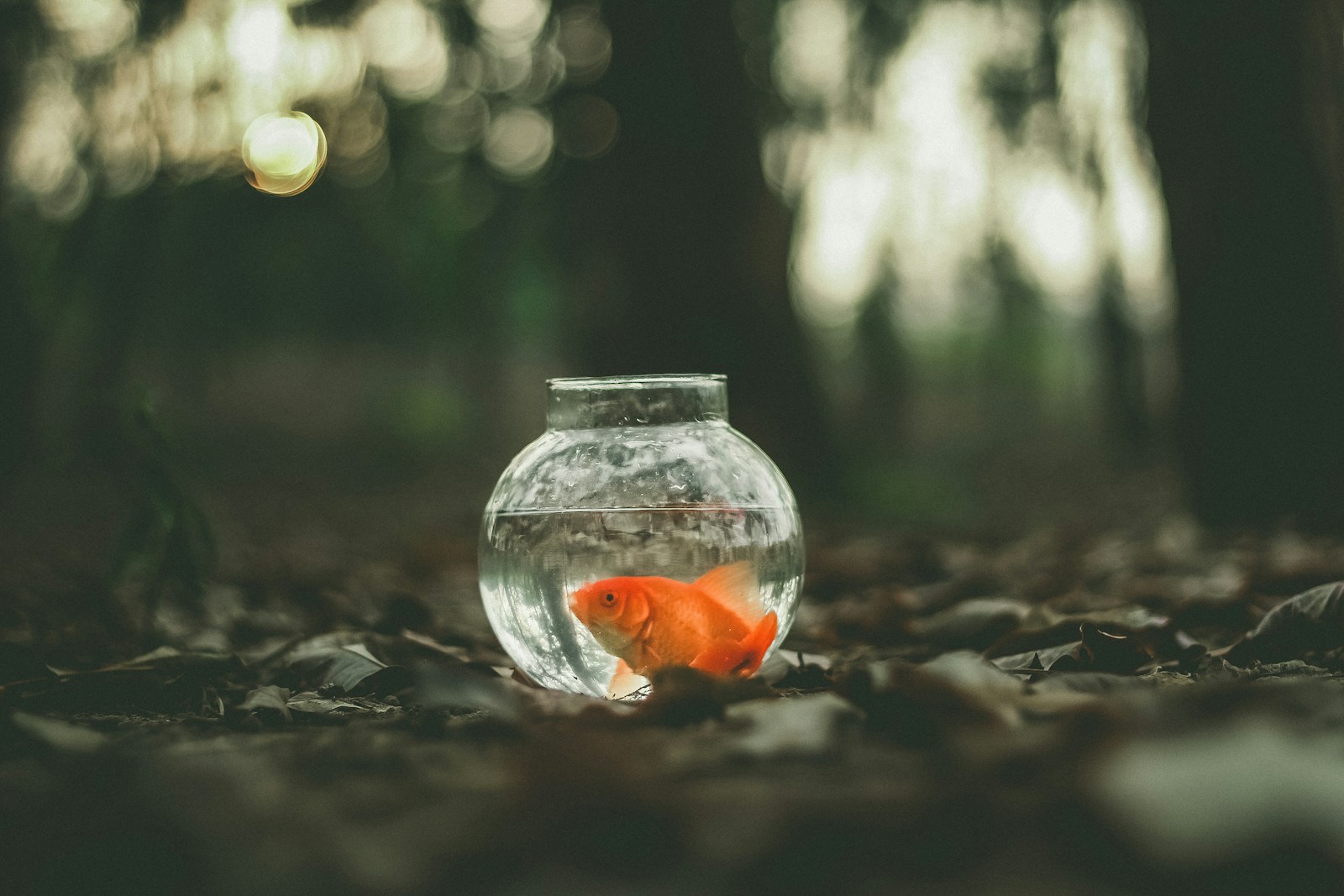If you’ve ever noticed your fish swimming eagerly after your finger as you move it along the outside of their tank, you might wonder what’s going on in their little aquatic minds. This behavior is not only fascinating to observe, but it also raises questions about how fish perceive their environment and interact with the world around them. While it might seem like a simple game, there are several reasons why your fish might be following your finger, ranging from basic instincts to learned behaviors. Fish tanks can often seem like static environments to us, but to fish, they are dynamic worlds full of stimuli that they need to understand. Let’s dive deeper into the various reasons your fish might be interested in your moving finger and explore some related aspects that can enhance your interaction with these fascinating creatures.
1. Curiosity and Exploration
Understanding Fish Curiosity
Fish are naturally curious creatures, and they often investigate new or unusual stimuli in their environment. This curiosity is a survival trait, helping them to understand potential threats and opportunities in their environment. When you move your finger along the glass, it creates a moving object that catches your fish’s attention. Their instinct is to explore and understand this new element in their environment, which is why they might follow your finger as it moves.
The Role of Curiosity in the Wild
In the wild, fish need to be aware of changes in their surroundings to detect food, predators, or potential mates. This instinctual curiosity drives them to follow anything that moves, including your finger. For them, it could be something worth investigating, whether it’s a potential food source or just something interesting to explore.
Encouraging Exploration at Home
To further stimulate this natural curiosity, consider introducing safe and varied decorations or structures into their tank. These can include plants, stones, and other aquarium decorations that provide both visual interest and hiding spaces. Moving these items around occasionally can also create new areas for exploration, keeping your fish engaged and active.
2. Association with Feeding
Creating Associations
One of the most common reasons fish follow your finger is that they associate it with food. If you often feed your fish by sprinkling food into the tank after putting your hand near the water, your fish might have learned to associate the presence of your hand or finger with feeding time. As a result, when they see your finger, they might think that food is on the way and swim towards it in anticipation.
Reinforcing Positive Associations
This behavior is particularly noticeable in fish that are regularly hand-fed or whose owners interact with them frequently. Over time, your fish can develop a strong association between your hand and food, leading them to follow your finger out of excitement or hunger.
Tips for Feeding and Interaction
To make the most of this interaction, try to maintain a consistent feeding schedule. This not only helps regulate their dietary needs but also strengthens their association between your presence and feeding time. When feeding, you can also take the opportunity to perform a quick health check, observing their behavior and physical condition for any signs of stress or illness.
3. Social Interaction and Play
Fish as Social Creatures
Fish are more interactive than many people realize, and some species enjoy engaging with their owners in a way that might be considered play. Following your finger can be a form of social interaction, where the fish is responding to your presence and movements.
Social Species
This behavior can be especially pronounced in fish species known for their intelligence and social nature, such as bettas, goldfish, and cichlids. In these cases, following your finger might not be about food at all, but rather a form of enrichment and stimulation.
Enhancing Social Interaction
To enhance this interaction, you can engage in regular play sessions with your fish, using your finger or other safe objects. Some fish may enjoy chasing a laser pointer or following a floating toy. Always ensure these activities do not cause stress or overstimulation.
4. Territorial Instincts
Understanding Territorial Behavior
For some fish, following your finger could be a territorial response. Many fish are naturally territorial, and they might perceive your finger as an intruder or potential threat entering their space. By following your finger, they’re essentially monitoring the “intruder” to ensure it doesn’t pose a danger to their territory.
Identifying Territorial Responses
This behavior is often more intense in fish species that are particularly territorial, such as certain cichlids or bettas. If your fish seems to be following your finger with a more aggressive posture—such as flaring their fins or darting back and forth—they might be displaying a territorial response rather than playful curiosity.
Managing Territorial Behavior
To manage this behavior, ensure your tank is large enough to accommodate the territorial needs of your fish. Providing ample hiding spaces and visual barriers can help reduce stress and prevent aggression. Observing how your fish interacts with other tank mates can also provide insight into their territorial behavior.
5. Movement and Light Sensitivity
Fish Sensory Perception
Fish have keen sensitivity to movement and light, which helps them survive in their natural environments. The movement of your finger across the glass creates a shifting light pattern that can catch their attention. In response, your fish might follow the movement as part of their natural instinct to track moving objects, which in the wild could be food, predators, or mates.
Natural Instincts at Play
This behavior is similar to how fish respond to light changes in their environment, such as the shifting shadows created by other animals swimming nearby or the movement of plants in the water. The movement of your finger might trigger this same instinctual response, leading them to follow it closely.
Optimizing Tank Lighting
To make the most of your fish’s natural sensitivity to light, consider the lighting setup of your aquarium. Using lights that mimic natural daylight can enhance their environment, and adjusting the light cycle to reflect day and night can help regulate their natural behaviors.
6. Training and Learned Behavior
Capabilities of Fish Learning
Fish are capable of learning and remembering specific behaviors, and they can be trained to follow a finger or other objects. If you consistently move your finger around the tank and reward your fish with food afterward, they may learn to associate following your finger with a positive outcome.
Training Techniques
Training fish can be a rewarding way to interact with them and can provide mental stimulation that keeps them active and engaged. If your fish has learned to follow your finger, it’s a sign of their ability to learn and adapt, which can lead to further training opportunities, such as teaching them to swim through hoops or follow specific commands.
Steps for Successful Training
- Consistency: Use consistent signals and rewards to reinforce desired behaviors.
- Patience: Training takes time, so be patient and observe your fish’s responses.
- Positive Reinforcement: Always reward with food or positive interaction to encourage learning.
7. Enhancing Fish Well-being
Creating an Enriching Environment
Understanding these behaviors not only helps you appreciate the complexity of your fish but also guides you in creating an enriching environment for them. An active and engaging tank setup can contribute significantly to their overall health and happiness.
Practical Tips for Enrichment
- Introduce Variety: Rotate decorations and introduce new elements periodically.
- Provide Interaction: Spend time each day interacting with your fish in playful and non-stressful ways.
- Monitor Health: Regularly check for signs of stress or illness, such as changes in behavior or appearance.
By observing and responding to the various reasons your fish might follow your finger, you can deepen your relationship with them. These interactions highlight the intricate ways fish perceive and engage with their world, offering endless opportunities for learning and connection. As you continue to explore these behaviors, you’ll find a deeper appreciation for the unique personalities and capabilities of your aquatic companions.




